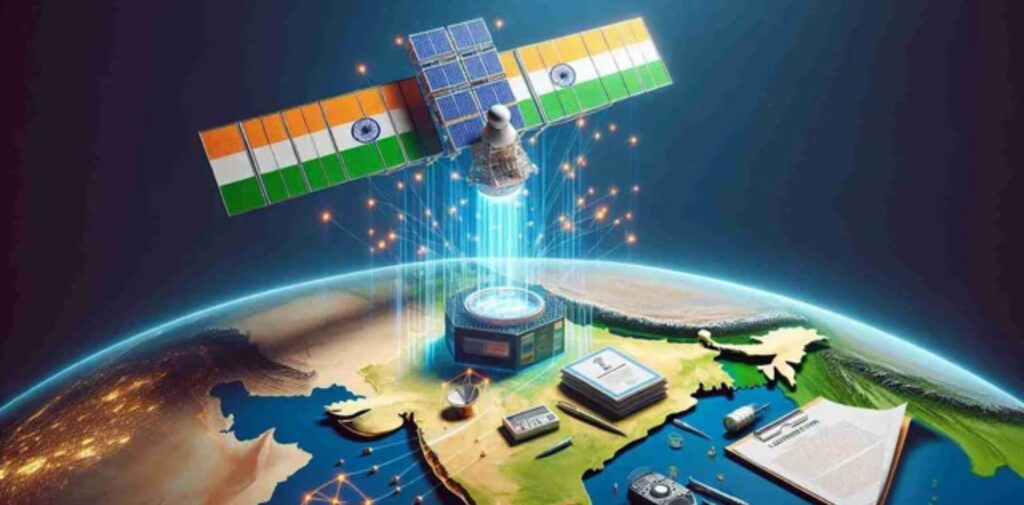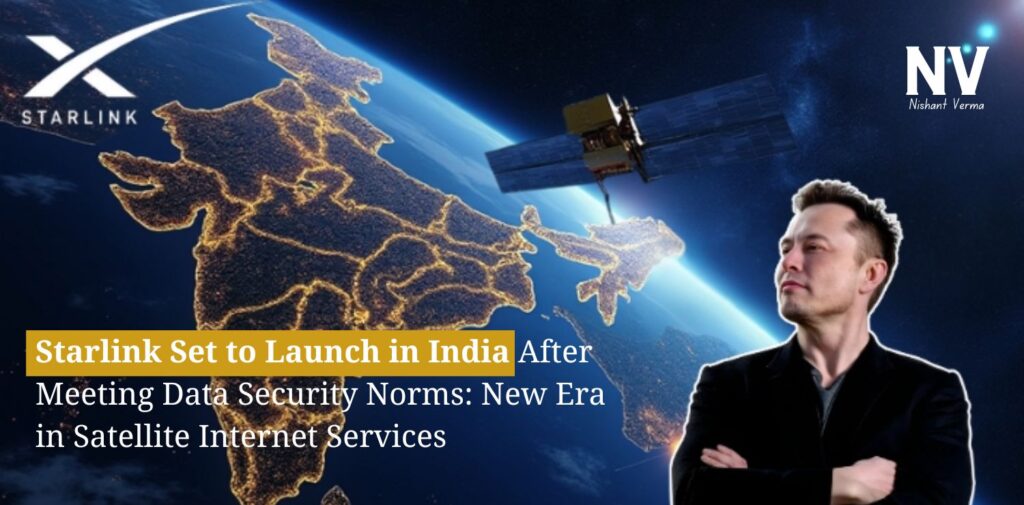In an exciting development for the Indian telecom sector, Elon Musk’s Starlink is now one step closer to launching its satellite internet services in India. After months of negotiations and regulatory hurdles, Starlink has agreed to comply with India’s stringent data security and operational norms. This agreement paves the way for the company to obtain the necessary licenses and commence its services in India, a country with a growing demand for reliable internet connectivity, especially in remote and rural areas.
A Promising Future for Satellite Internet in India
Starlink, the satellite internet division of Musk’s SpaceX, offers broadband internet services via a network of low Earth orbit (LEO) satellites. The potential of Starlink to revolutionize internet access in India is significant. In a country with over 1.4 billion people, many of whom live in rural and remote locations, internet access can be limited or unreliable. Traditional cable-based broadband or fibre-optic connections are often unavailable in these areas, and mobile networks struggle with poor signal strength and limited bandwidth. Starlink, with its constellation of satellites orbiting the Earth, promises to provide high-speed, low-latency internet to even the most remote corners of India.
The Roadblock: Data Security Concerns
Despite its innovative technology and clear benefits, Starlink’s entry into the Indian market has been delayed due to concerns about data security. India has some of the strictest regulations when it comes to cybersecurity and the protection of user data. These regulations are designed to ensure that foreign companies comply with local norms, safeguard sensitive data, and protect national security interests.
For Starlink, the issue was that its satellite-based internet services involved handling a large amount of data, which raised concerns among Indian authorities about the potential risk of data being accessed or misused by foreign governments or entities. To address these concerns, the Indian government set certain conditions for foreign satellite internet providers. These conditions included compliance with local data storage and transmission norms, as well as ensuring that the data could not be intercepted or compromised during transmission.
Initially, this led to delays in Starlink’s plans to launch in India. However, after detailed discussions, the company has agreed to meet all of India’s security requirements. This includes adhering to regulations that demand data be stored locally within the country, a crucial step in ensuring that user data remains under Indian jurisdiction.

Key Developments and Agreement
The breakthrough came in November 2024 when Starlink formally agreed to comply with India’s security requirements. According to reports from several sources, the agreement ensures that Starlink will follow the necessary protocols for data protection, encryption, and compliance with Indian laws. The company will also ensure that its satellite operations will not compromise national security.
This agreement is a significant milestone for Starlink and marks a positive development in India’s telecom sector. In exchange for agreeing to these terms, Starlink’s application for a satellite communication (satcom) license in India can now proceed. With this approval, the company can start rolling out its services and providing high-speed internet access to users across the country.
How Starlink Will Impact Internet Connectivity in India
India’s internet penetration has seen significant growth in recent years, with millions of people coming online for the first time. However, the country still faces challenges in providing reliable and high-speed internet access to its vast rural population. According to India Today, about 60% of India’s population lives in rural areas, and many of these regions struggle with poor connectivity.
Starlink’s satellite-based internet service offers a potential solution to this problem. Unlike traditional internet providers, which rely on terrestrial infrastructure, Starlink uses a network of satellites to beam internet directly to the ground. This technology does not require cables or fibre optics, which can be expensive and difficult to deploy in remote areas. With Starlink, all that’s needed is a small satellite dish to receive the signal, and users can access fast, reliable internet from almost anywhere.
This could have a transformative impact on rural India, where many communities have limited or no access to the internet. With Starlink’s service, people in these areas will be able to access educational resources, government services, and employment opportunities online, helping bridge the digital divide and improve livelihoods.
Additionally, Starlink’s low-latency, high-speed internet could also benefit businesses, startups, and enterprises across India, particularly in areas where connectivity is otherwise poor. Entrepreneurs in rural India could potentially expand their operations and reach global markets, thanks to the internet access provided by Starlink.

A Competitive Landscape for Satellite Internet in India
While Starlink’s arrival in India is highly anticipated, it will face competition from other satellite internet providers. Companies like Amazon’s Project Kuiper and OneWeb, a UK-based satellite internet venture, are also planning to roll out services in India. However, Starlink’s first-mover advantage, combined with Elon Musk’s global brand recognition, gives it a strong edge in the race.
That said, India’s market is highly competitive, and local providers will also need to adapt to meet the growing demand for better internet services. The entry of Starlink into the market is expected to prompt existing telecom companies in India to improve their offerings, especially in rural and underserved regions. This could ultimately lead to better services, faster speeds, and lower prices for consumers.
Government Support for Satellite Internet Providers
The Indian government has expressed strong support for the use of satellite internet technology to improve connectivity across the country. The government recognizes the potential of satellite-based broadband services, especially in areas where traditional internet infrastructure is not feasible.
According to reports, the Indian government has been actively working to create a conducive regulatory environment for satellite internet providers like Starlink. The government has also been encouraging public-private partnerships in this space to ensure that the benefits of satellite internet are extended to every corner of the country.

What’s Next for Starlink in India?
With the regulatory hurdles cleared and the necessary agreements in place, Starlink’s entry into India is expected to happen soon. The company has already started taking pre-orders for its service, and many Indian customers are eagerly awaiting its launch. Starlink’s satellite internet service is expected to offer competitive pricing, with plans that could be affordable for the average Indian consumer.
However, there are still some challenges ahead. For instance, Starlink will need to scale its operations and deploy more satellites to meet the growing demand for internet services in India. Additionally, the company will have to continue working closely with Indian regulators to ensure that it remains compliant with local laws as it expands its operations in the country.
Conclusion: Satellite Internet Services
Starlink’s agreement to comply with India’s data security norms marks a significant milestone in the company’s plans to launch satellite internet services in India. With this agreement, the company is now poised to bring high-speed, reliable internet to millions of people across the country, particularly in rural and remote areas. As Starlink takes its first steps toward launching in India, it will play a crucial role in bridging the digital divide and ensuring that more Indians can access the benefits of the internet.
While there is competition in the satellite internet space, Starlink’s advanced technology, strong brand, and commitment to local regulatory compliance make it a key player in India’s digital future. As India continues to grow as a digital economy, services like Starlink will be at the forefront of driving connectivity, innovation, and progress.




